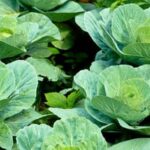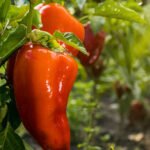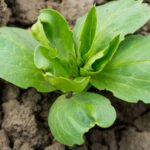Are you looking to start a vegetable garden in a cold climate? Cold climate vegetable gardening presents its own set of challenges and advantages that every aspiring gardener should be aware of. From selecting the right vegetables to preparing the soil and protecting your garden from frost, this comprehensive guide will provide you with valuable tips and recommendations for successful cold climate vegetable gardening.
In colder regions, understanding the unique requirements of cold-hardy vegetables is crucial for a thriving garden. Selecting the right vegetables that can withstand low temperatures and shorter growing seasons is essential for a successful harvest. With the proper knowledge and preparation, you can enjoy a bountiful garden even in colder climates.
Preparing the soil for cold climate gardening is another vital aspect to consider. Strategies for ensuring optimal growing conditions in colder temperatures play a significant role in the success of your vegetable garden. By implementing the right techniques, you can create an environment that encourages healthy plant growth and maximizes yield, despite the challenges of a cold climate.
Selecting the Right Vegetables for a Cold Climate Garden
When it comes to cold climate vegetable gardening, selecting the right vegetables is crucial for a successful harvest. Cold-hardy vegetables are more resilient to lower temperatures and can withstand frost, making them ideal for colder regions. Here are some tips and recommendations for choosing the right vegetables for your cold climate garden:
- Root Vegetables: Root vegetables such as carrots, beets, and radishes are excellent choices for cold climate gardening. Their hardy nature allows them to thrive in cooler temperatures, and they can even improve in flavor after being exposed to a light frost.
- Leafy Greens: Cold-hardy leafy greens like kale, spinach, and Swiss chard are also well-suited for cold climate gardens. These nutrient-rich vegetables can tolerate chilly temperatures and provide a bountiful harvest throughout the growing season.
- Cruciferous Vegetables: Broccoli, cabbage, and Brussels sprouts are examples of cold-hardy cruciferous vegetables that perform well in colder climates. With proper care and protection from frost, these plants can yield a generous crop even in chilly weather.
In addition to these recommendations, it’s important to consider the specific microclimate of your garden when selecting vegetables for a cold climate. Certain areas within your garden may have slightly different temperature conditions, so it’s important to choose varieties of vegetables that can adapt to these variations.
By planting the right cold-hardy vegetables in your garden, you can set yourself up for a successful growing season despite the challenges of colder temperatures. With careful selection and planning, you can enjoy a diverse and plentiful harvest of fresh produce from your cold climate garden.
Preparing the Soil for Cold Climate Gardening
When it comes to cold climate vegetable gardening, preparing the soil is crucial to ensure that your plants can thrive in less than ideal conditions. The cold temperatures and harsh weather in colder regions can pose challenges for gardening, but with the right strategies, you can create optimal growing conditions for your vegetables.
Choosing the Right Location
Selecting the right location for your cold climate garden is important for ensuring that your soil is able to retain heat and provide a suitable environment for your vegetables. Choose a spot that receives maximum sunlight during the day and is sheltered from strong winds. This will help to create a microclimate that is more favorable for plant growth.
Amending the Soil
In cold climate vegetable gardening, it’s important to amend the soil with organic matter to improve its structure and fertility. Adding compost, aged manure, or other organic materials can help to improve drainage, water retention, and nutrient levels in the soil. Consider conducting a soil test to determine any deficiencies and adjust accordingly.
Protecting the Soil
In colder temperatures, it’s crucial to protect your soil from freezing and becoming compacted. Use mulch to cover the soil and provide insulation against extreme temperatures. This will help to maintain a more stable growing environment for your vegetables. Additionally, consider using row covers or cloches to shield young plants from frost and wind damage.
By taking these strategies into consideration when preparing the soil for cold climate vegetable gardening, you can ensure that your garden has optimal growing conditions even in colder temperatures. With proper location selection, soil amendment, and protection measures in place, you’ll be well on your way to successfully growing vegetables in a cold climate.
Protecting Your Cold Climate Garden From Frost and Extreme Weather
When it comes to cold climate vegetable gardening, one of the biggest challenges is dealing with frost and extreme weather. However, with the right techniques, you can extend your growing season and maximize your yield. Here are some proven strategies for protecting your cold climate garden:
1. Create a barrier: Use row covers, cloches, or cold frames to create a physical barrier between your plants and the elements. This will help retain heat and protect your vegetables from frost.
2. Mulch for insulation: Mulching your garden beds can provide an extra layer of insulation, keeping the soil warmer and preventing temperature fluctuations that could harm your plants.
3. Utilize hoop houses: Hoop houses are a great investment for cold climate vegetable gardening. These structures provide protection from frost and wind while capturing solar heat to create a warmer microclimate for your plants.
By implementing these techniques, you can significantly extend your growing season and increase the success of your cold climate vegetable garden. With careful planning and proper protection, you can enjoy a bountiful harvest even in colder temperatures.
Remember to regularly check weather forecasts and be prepared to implement protection measures as needed to safeguard your precious crops from frost and extreme weather in a cold climate vegetable gardening environment.
Cold Climate Gardening Tools and Equipment
In order to have a successful cold climate vegetable garden, it’s essential to have the right tools and equipment at your disposal. The unique challenges of gardening in colder regions require specific gear to ensure optimal growing conditions and a bountiful harvest. Here are some must-have items for cold climate vegetable gardening:
Quality Cold-Weather Clothing and Gear
Gardening in colder climates means being prepared for chilly temperatures and inclement weather. Invest in high-quality, insulated clothing and waterproof gear to keep yourself warm and dry while tending to your garden. Consider purchasing thermal gloves, a durable pair of boots, and a waterproof jacket to protect yourself from the elements.
Cold Frames and Row Covers
To extend the growing season and protect your cold climate vegetables from frost, consider investing in cold frames or row covers. These structures provide warmth and shelter for delicate plants, allowing you to start planting earlier in the spring and continue harvesting later into the fall. Choose a design that is sturdy enough to withstand strong winds and heavy snowfall.
Garden Tools Suitable for Cold Weather
When gardening in colder regions, it’s important to have the right tools that can withstand low temperatures and harsh conditions. Look for stainless steel or aluminum gardening tools that are less likely to rust or corrode in damp, cold soil. Additionally, consider adding long-handled tools like spades, rakes, and hoes to minimize bending over in chilly weather.
By equipping yourself with these essential tools and equipment, you’ll be better prepared to tackle the challenges of cold climate vegetable gardening. From protective clothing to season-extending structures, having the right gear can make all the difference in maintaining a thriving garden in colder regions.
Tips for Successful Cold Climate Vegetable Gardening
When it comes to cold climate vegetable gardening, there are several best practices that can help ensure a successful and thriving garden, even in colder temperatures. One of the first things to consider is selecting the right vegetables for your cold climate garden. Cold-hardy vegetables such as kale, spinach, carrots, and Brussels sprouts are excellent choices for withstanding chilly weather. Additionally, opting for quick-maturing varieties can help you get a harvest before the first frost hits.
In addition to choosing the right vegetables, it’s essential to prepare the soil properly for cold climate gardening. Adding organic matter like compost or well-rotted manure can help improve soil structure and fertility. It’s also important to ensure proper drainage to prevent waterlogging, which can be detrimental in cold conditions. Using raised beds can also provide better drainage and warmer soil temperatures for your plants.
When it comes to protecting your cold climate garden from frost and extreme weather, techniques such as using row covers or cold frames can help extend the growing season. These tools act as a barrier between your plants and harsh weather conditions while also trapping heat close to the ground. Additionally, paying attention to weather forecasts and covering your plants on particularly chilly nights can help prevent damage from frost.
Lastly, having the right tools and equipment is crucial for successful cold climate vegetable gardening. Investing in quality garden tools like shovels, rakes, and hand trowels designed for durability and comfort can make tasks easier in colder conditions. Proper clothing such as gloves, hats, and waterproof boots will also make gardening more comfortable during chilly days.
| Vegetable | Cold-Hardy? |
|---|---|
| Kale | Yes |
| Spinach | Yes |
| Carrots | Yes |
| Brussels sprouts | Yes |
Harvesting and Storing Cold Climate Vegetables
When it comes to harvesting and storing cold climate vegetables, there are a few key strategies to keep in mind in order to maximize your yield and preserve your produce in colder climates. One of the most important considerations is timing.
In colder regions, the growing season may be shorter, so it’s essential to pay attention to the optimal time for harvesting each type of vegetable. Harvesting too early can result in underdeveloped produce, while waiting too long can lead to overripe or damaged vegetables.
Once you have harvested your cold climate vegetables, proper storage is crucial for preserving their freshness and flavor. Root vegetables like carrots, potatoes, and beets can be stored in a cool, dark place such as a root cellar or basement. Brassicas like cabbage and Brussels sprouts can be kept in a cold storage area or even hung upside down for longer shelf life.
In addition to proper harvesting and storage techniques, there are also various methods for preserving cold climate vegetables for long-term use. Canning, freezing, pickling, and fermentation are all popular ways to extend the shelf life of your harvest and enjoy homegrown produce throughout the year. By mastering these preservation methods, you can make the most of your cold climate vegetable garden and enjoy fresh, healthy produce even during the winter months.
| Cold Climate Vegetable | Optimal Harvest Time |
|---|---|
| Carrots | Late fall or after first frost |
| Brussels Sprouts | After first frost but before severe cold sets in |
| Potatoes | Before temperatures drop below freezing |
Resources for Cold Climate Vegetable Gardening
In conclusion, cold climate vegetable gardening presents its own unique set of challenges and advantages. While the shorter growing season and potential for frost may pose obstacles, there are also cold-hardy vegetables that thrive in these conditions. By carefully selecting the right vegetables, preparing the soil, and protecting your garden from extreme weather, you can still enjoy a successful harvest even in colder regions.
It is important to do thorough research and seek out resources specific to cold climate vegetable gardening. There are many books, websites, and community resources available that offer valuable information and support for those looking to start or improve their cold weather garden. From tips on maintaining optimal growing conditions to techniques for extending the growing season, these resources can provide valuable guidance for success.
Ultimately, with the right tools and knowledge, it is possible to have a thriving vegetable garden in a cold climate. By implementing best practices and utilizing recommended resources, you can maximize your yield and preserve your produce even in colder temperatures. Cold climate vegetable gardening may require some extra effort, but with dedication and the right resources, it can be a rewarding experience.
Frequently Asked Questions
What Vegetables Grow Best in Cold Weather?
Some vegetables that grow best in cold weather include kale, spinach, carrots, radishes, and Brussels sprouts. These plants can withstand colder temperatures and even taste sweeter after a frost.
What Temperature Is Too Cold for Vegetable Garden?
Most vegetable plants are susceptible to damage when temperatures drop below 50°F (10°C). However, some cold-hardy varieties can tolerate lower temperatures, but generally anything below freezing is too cold for most vegetables.
When Can I Plant Cold Weather Vegetables?
Cold weather vegetables like lettuce, peas, and broccoli can be planted as early as late winter to early spring. The exact timing will depend on your specific location and climate, so it’s best to check with local gardening resources or nurseries for the optimal planting dates.

If you’re looking to get into vegetable gardening, or are just looking for some tips on how to make your current garden better, then you’ve come to the right place! My name is Ethel and I have been gardening for years. In this blog, I’m going to share with you some of my best tips on how to create a successful vegetable garden.





